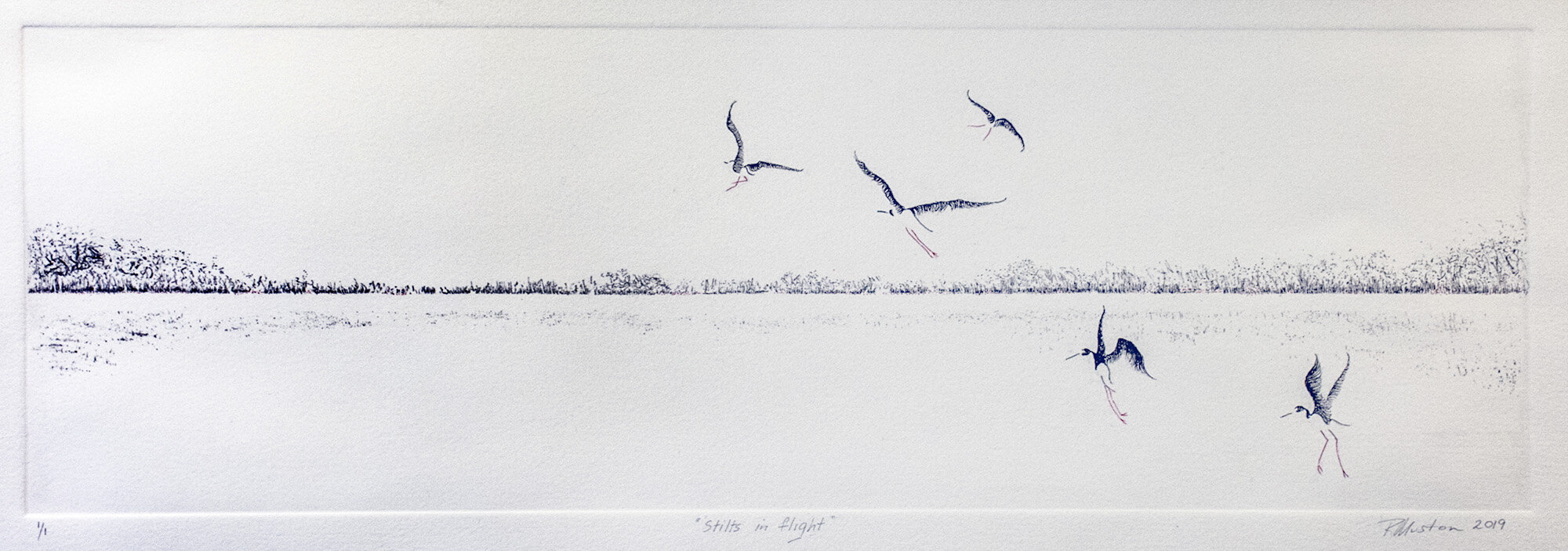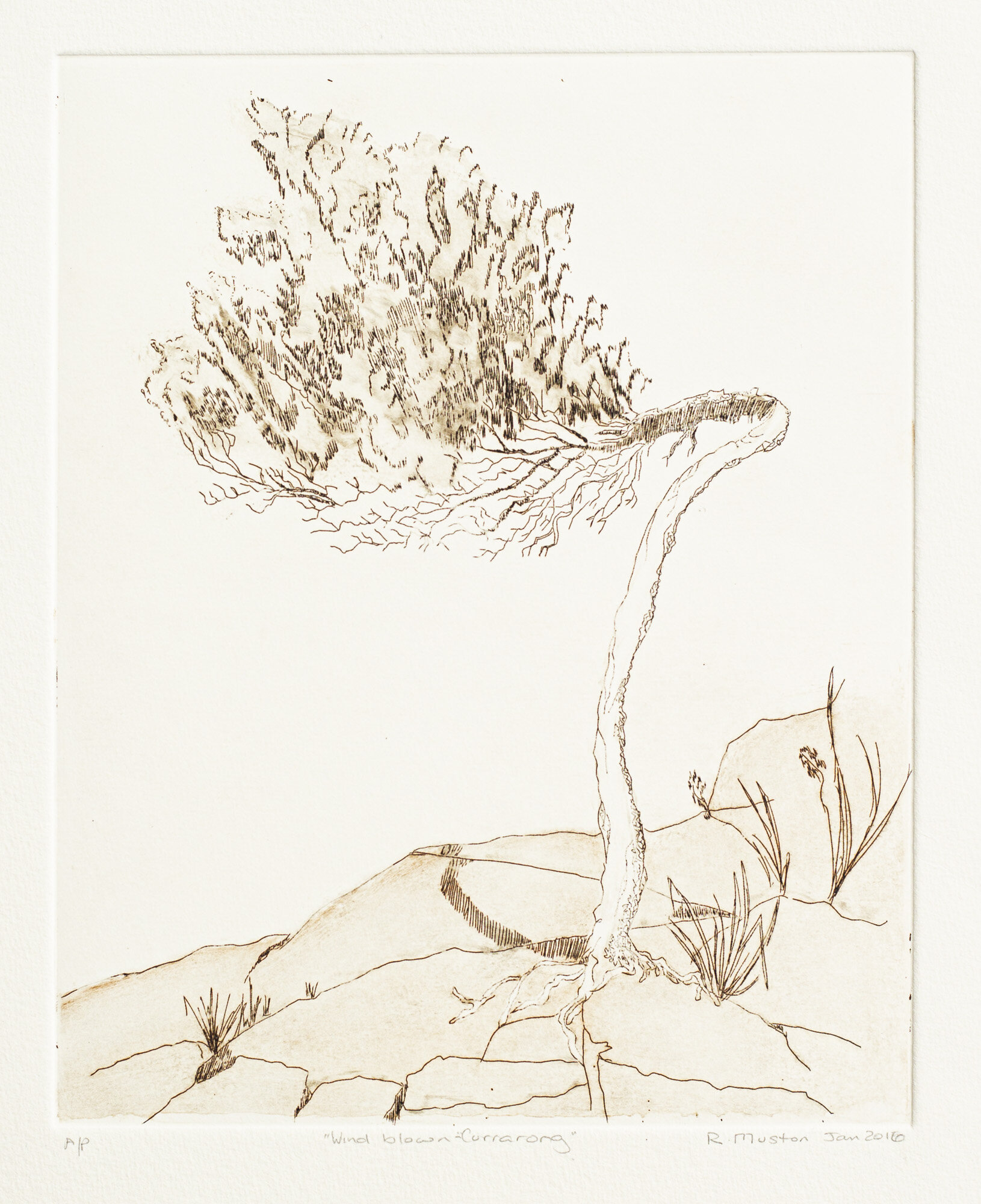ROS MUSTON
/BIOGRAPHY
Ros is a natural resource management scientist. She shares her time with printmaking and ceramics. She has always moved comfortably between academic and visual representation of the natural world. She was taught to conceptualise scientific images at the open art courses at the National Art School in Sydney and from various generous artists both nationally and internationally. Her prints and ceramics take their inspiration from Ros’ lifelong fascination with the natural world.
The images in Ros’ artworks are often derived from her career in environmental science. She is intrigued with the alchemy of metal plate printmaking and experimenting with layering multiple printmaking techniques.
CONNECTION TO BALDESSIN STUDIO
I discovered Baldessin Press & Studio during the Nillumbik Open Studios program. I was immediately fascinated by the old stone studio at St Andrews and loved how it seemed to buzz with creative energy and a weighty history. I enrolled in Baldessin Studio’s 4-day Traditional Etching Workshop taught by Robert Hails and then another and another. My love of printmaking began and grew from Rob’s generous and encouraging support, and tuition. As a volunteer I assist Tess and Silvi with the running of the studio and I provide technical support for printmaking workshops and during access days. For me the Baldessin Studio represents warm friendships, creative inspiration and a generous and supportive space for my printmaking. - Ros Muston
ABOUT THE ARTWORK
I’m fascinated by the minute detail and repeated patterns in natural landscapes. It is mostly these that inspire the images in my prints. Not at all surprising because I’ve spent most of my adult life professionally peering into nature at a very fine level of detail and analysis. In the latter part of my scientific career I spent more time in the company of abstract concepts and social conflict associated with environmental reforms. So sometimes I’m very tempted to also capture the silliness of human behaviour.
Etching techniques provide me with a lace-like delicacy of line and tone that best express what I see and try to understand in nature. For me the quietness, the slowness and the alchemy of the metal plate etching process reflects my meditative process of environmental observation. In the end, it is really the capacity of the printing press to take my careful marks, remove them from my controlling hand and turn them into something unexpected that really delights me.













